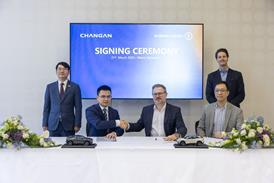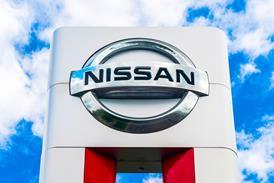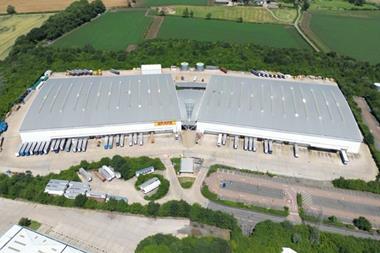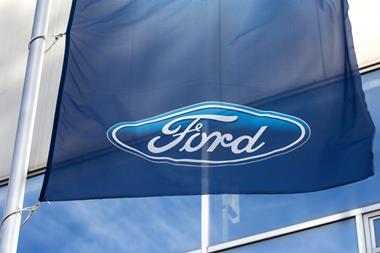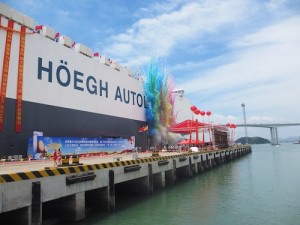 Höegh Autoliners has taken delivery of the first of six new post-panamax vessels, all of which will be delivered over the next 18 months. The first vessel has been named Höegh Target and will be able to carry 8,500 car equivalent units (CEUs) on a deck space of 71,400 sq.m. Höegh is designating the vessels as part of its New Horizon design, which it said are the largest pure car and truck carriers (PCTCs) in the world.
Höegh Autoliners has taken delivery of the first of six new post-panamax vessels, all of which will be delivered over the next 18 months. The first vessel has been named Höegh Target and will be able to carry 8,500 car equivalent units (CEUs) on a deck space of 71,400 sq.m. Höegh is designating the vessels as part of its New Horizon design, which it said are the largest pure car and truck carriers (PCTCs) in the world.
The Höegh Target was built by Xiamen Shipbuilding Industries. It was named by Mette Folden, wife of Ingar Skiaker, CEO of Höegh Autoliners.
“The naming of Höegh Target is a milestone in the company’s history,” said Steinar Løvdal, head of Capacity Management at Höegh Autoliners. “This is the first post-panamax PCTC that we take delivery of and the New Horizon design truly represents state of the art engineering. The design has been developed in close cooperation with Deltamarine OY over many years, and we are now excited to put the first vessel in play.”
Höegh was keen to flag up the vessel’s energy efficient credentials, which include a new hull design that combines high cargo capacity with low fuel consumption. The New Horizon class has been given DNV-GL’s class notification ‘CLEAN’ for its design. DNV GL is an international certification body and classification society.
“In Höegh Autoliners, we have a deeply held belief in the necessity of taking responsibility for the environment in which we operate,” said Løvdal. “It is with great pride that we today name a vessel that is estimated to emit 50% less CO2 per car transported than a standard car carrier.”
The vessel has a door opening that is higher than Höegh Autoliners’ current vessels, which means cargo up to 6.5 metres high and 12 metres wide can be loaded on the ship. The ship also has stronger ramps allowing cargo weighing up to 375 tonnes to be loaded over the stern ramp and 22 tonnes over the side ramp.
The Höegh Target will make its maiden voyage from East Asia to Europe in early July, and will thereafter sail from Europe back to East Asia via Africa and Oceania.
















